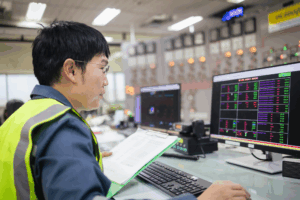
How to prevent back injuries in the workplace
Many industries, ranging from nursing and construction to manufacturing and office work, can place significant demands on your back. Back pain can make it difficult to concentrate at work and lead to injuries. So, it’s important to understand what causes back injuries in the workplace and what you can do to prevent them.
Back injury causes
Three primary safety hazards in the workplace that can lead to back injuries include:
- Force. The most common cause of back injury in the workplace is force, such as lifting or carrying a heavy object.
- Repetition. Repetitive strain on the back, such as frequent twisting and bending, can cause chronic back pain and injuries in the workplace.
- Inactivity. Sitting for prolonged periods of time, especially with poor posture, can put a lot of strain on your back.
Back injury prevention at work
To reduce strain on your back and prevent injuries while you’re working, consider these three tips.
Tip one: Use proper lifting techniques.
Before lifting an object, assess your ability to handle the object. Should you ask a coworker for help, or can you use lifting equipment?
The following are best practices when lifting, carrying, and unloading an object to prevent injuries:
- Make sure your path is clear to carry the object.
- Stand close to the object, with your feet shoulder-width apart.
- Bend at the knees, not at the waist, and try to maintain your body’s natural curve throughout the lift.
- Pull the object close to you, and grip it firmly.
- Tighten your stomach to act as a back support, and power the lift with your legs rather than with your back.
- Keep the object close to your body, and don’t twist or lean while carrying the object.
- Take small steps, and make sure your footing is stable.
- To unload an object, squat and bend your knees while keeping your back straight.
- Keep your fingers away from the bottom and sides of the object so they don’t get pinched or crushed as you lay it down.
Tip two: Modify repetitive tasks.
It’s helpful to modify repetitive tasks to make them more comfortable and reduce the strain on your back. For example, if you frequently lift objects at work, use lifting equipment such as forklifts, hand trucks, and conveyors. If you are regularly taking phone calls, use a headset instead of a hand-held phone.
Tip three: Practice good posture.
To protect your back while at your desk, use an ergonomic chair, and make sure you’re sitting in an upright position. You may consider using a lumbar pillow for extra lower back support. If using a computer, place your monitor where you can see it without having to lean forward or backward or twist uncomfortably.
Be sure to:
- Sit with both feet flat on the ground and knees at a 90° angle so your thighs are parallel to the floor.
- Adjust your desk so you’re looking straight ahead rather than craning your neck up or down.
- Get up at least once an hour to stretch and move around.
In the event you do get injured on the job, you should:
- Immediately report the problem to your supervisor.
- Seek medical attention. Remember that early treatment and intervention may prevent the injury from worsening or becoming a chronic condition.
Lifestyle factors
A healthy body is less likely to sustain an injury and can heal much quicker if you do injure yourself. Below are some habits that can help prevent back pain and injuries:
- Stay active and stretch. Combine aerobic exercise, like running or swimming, with strength training, and be sure to stretch afterward. Exercises that increase your balance and strength, such as yoga and tai chi, can also decrease your risk of injuring your back.
- Eat nutritious food. Make sure you get enough calcium and vitamin D, which can be found in dairy, fruits, leafy greens, and beans. These nutrients can help prevent osteoporosis, a condition that causes your bones to become weak and brittle.
- If you smoke, quit. Smoking reduces blood flow to your lower spine, which can contribute to spinal disk degeneration and slow healing from back injuries.



